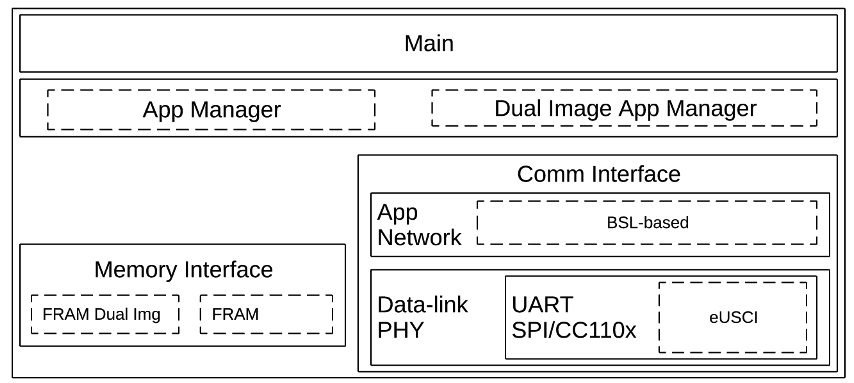SLAA721E October 2016 – March 2020 MSP430FR5969 , MSP430FR5969-SP , MSP430FR5994 , MSP430FR6989
- Trademarks
- 1Introduction
- 2Implementation
- 3Customization of MSP430FRBoot
- 4Building MSPBoot
- 5Demo Using FRAM LaunchPad Development Kit as Host
- 6Porting the target side example projects to other MSP430FR devices
- 7References
- 8Revision History
2 Implementation
A modular approach is used to allow for an easy migration between MSP430 devices and allow for customization of each layer. Figure 2-1 shows the software layers.
 Figure 2-1 MSPBoot Software Architecture
Figure 2-1 MSPBoot Software ArchitectureEach module is described in more detail in the following sections.